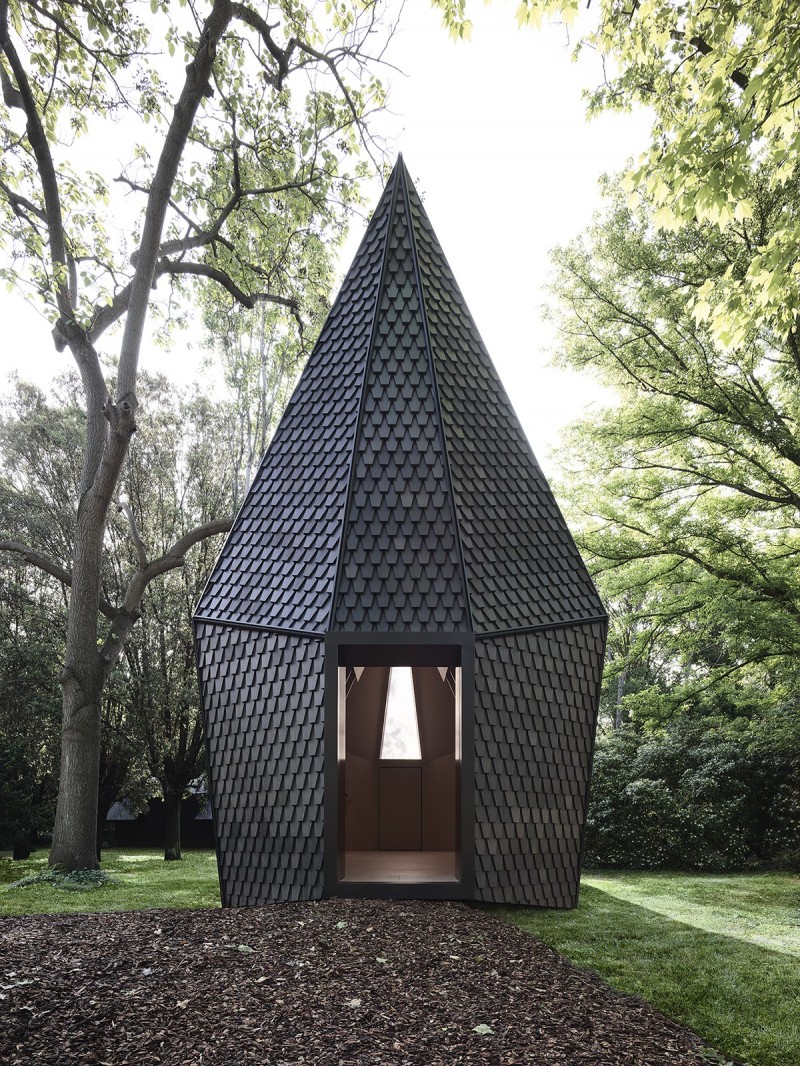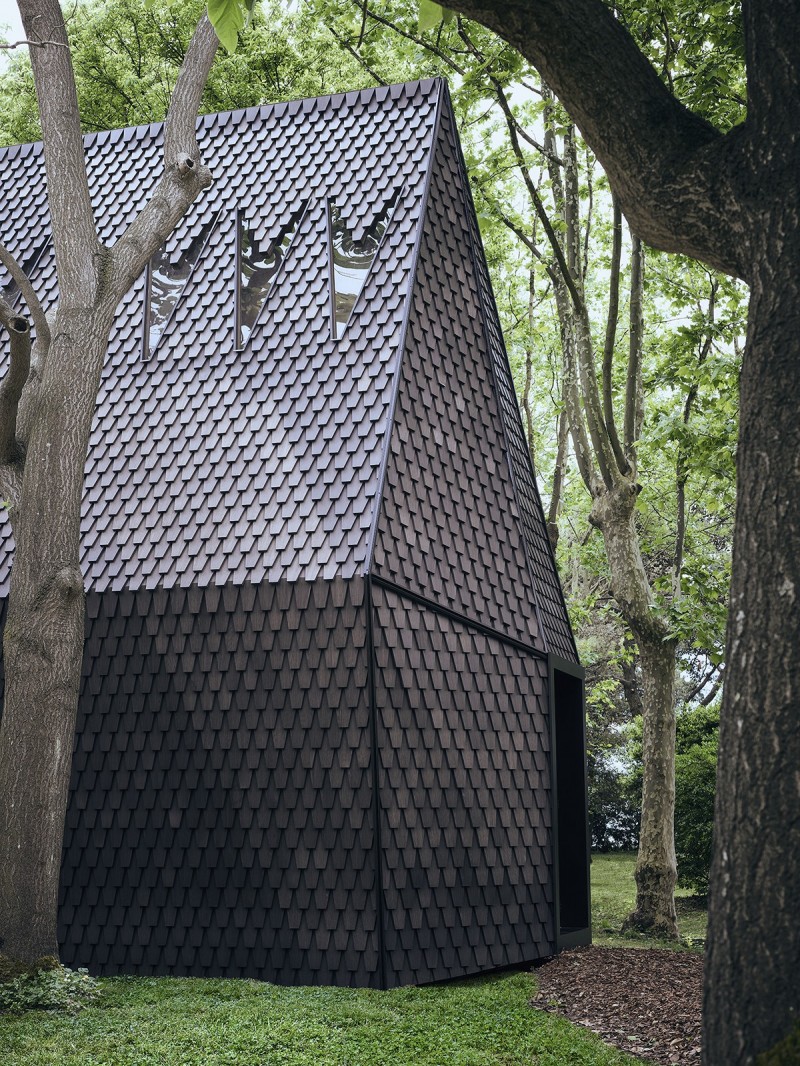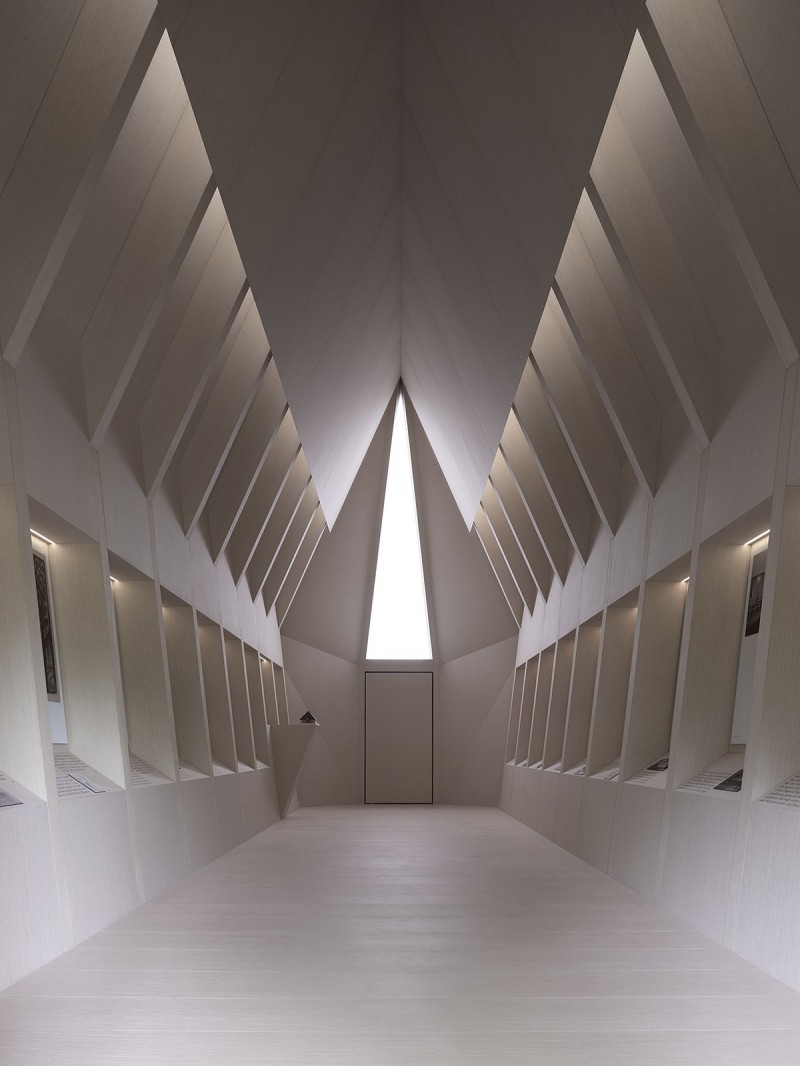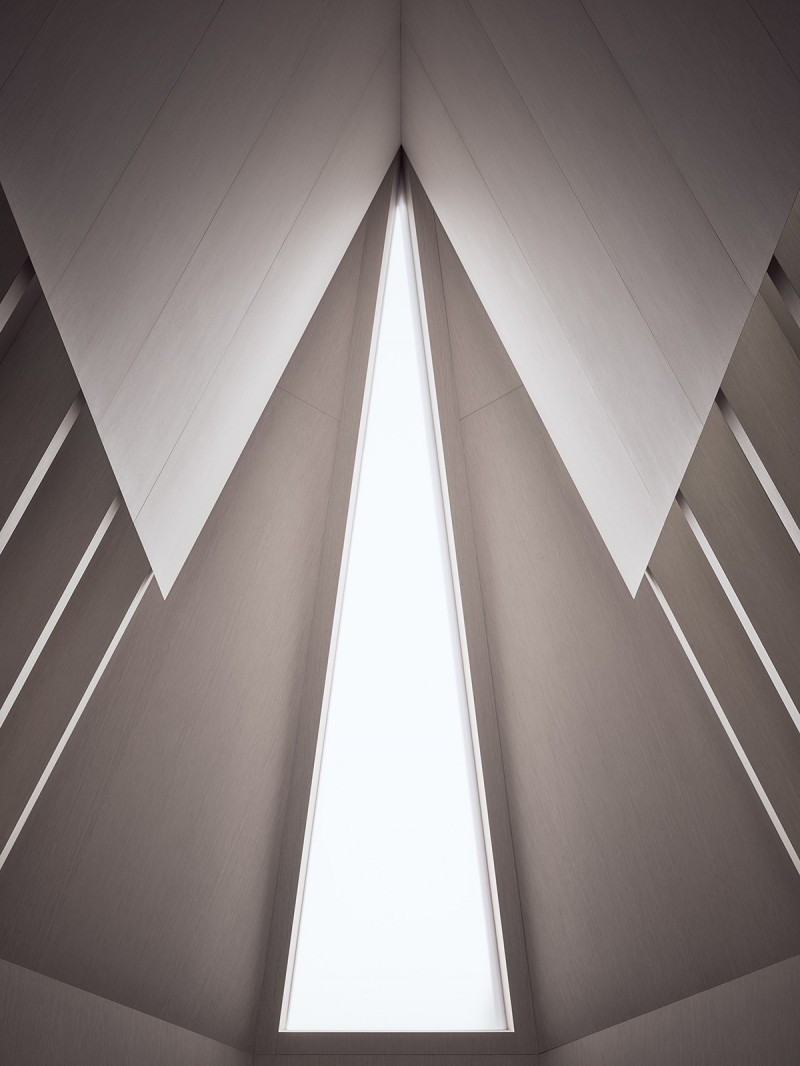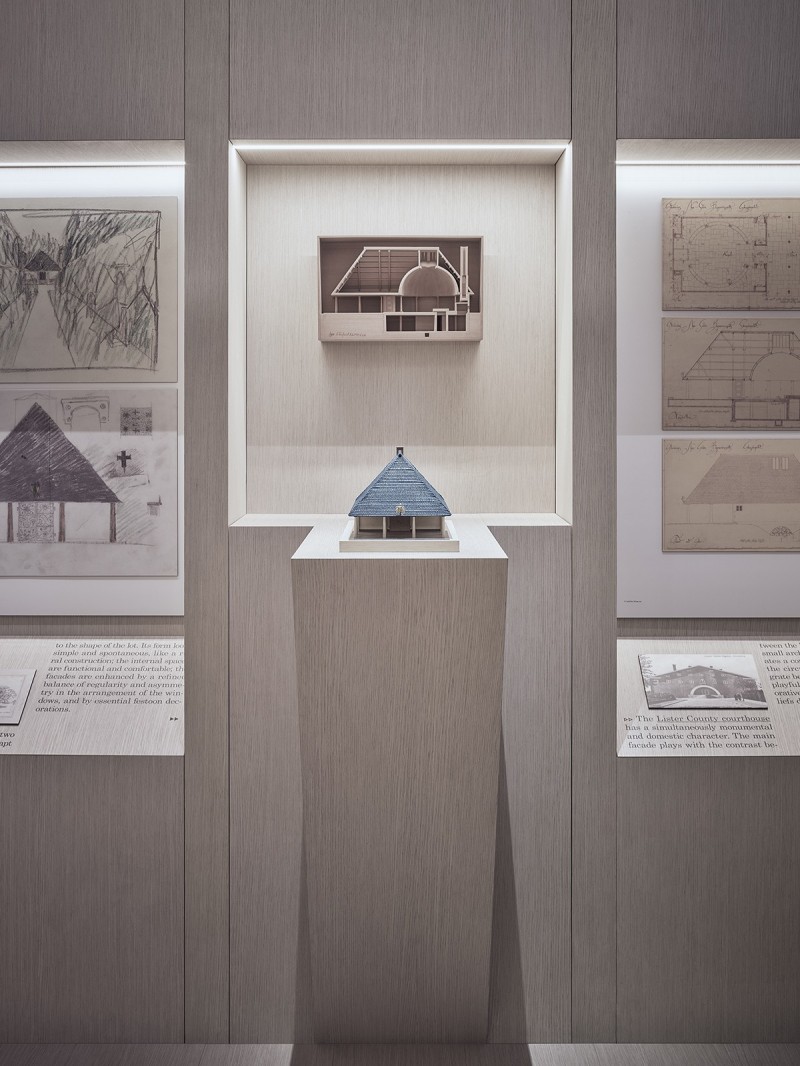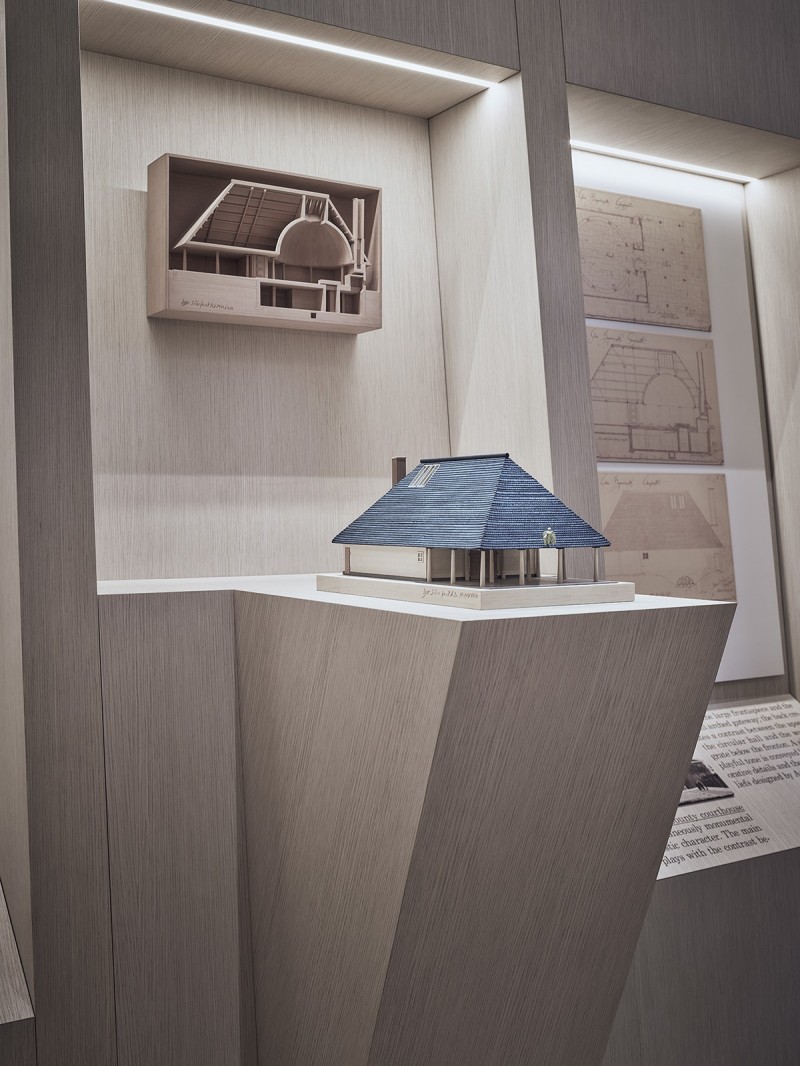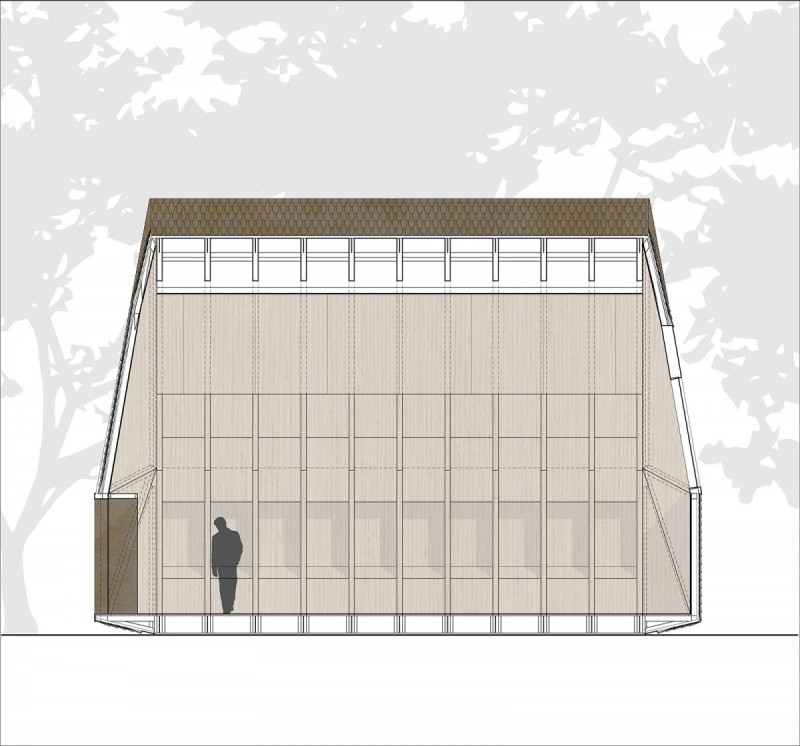Location: Italy
Asplund Pavilion was the introductory element to the first National Pavilion of the Holy See at the International Architecture Exhibition of the Venice Biennale 2018 and it contained Asplund\\\\\\\\\\\\\\\\\\\\\\\\\\\\\\\\\\\\\\\\\\\\\\\\\\\\\\\\\\\\\\\'s drawings for for the Skogskapellet in Stockholm, which was the theme of the exhibition.\\\\\\\\\\\\\\\\\\\\\\\\\\\\\\\\r\\\\\\\\\\\\\\\\\\\\\\\\\\\\\\\\nThe element in its absolutism is intended to refer both to the stereometry of the supporting buildings designed by Asplund and Lewerentz for the Skogskyrkogården cemetery and to the theme and spatiality of the hut - shelter in nature. A sort of domestic absolute which borrows from traditional Nordic woodwork a reinterpreted vernacular lexicon. The pavilion - about 11.00 m long, 8.00 m high, supported by 11 lamellar wood portals that define 10 bays – is basically configured as a pitched roof with an emphasized vertical proportion, characterized by a continuous cladding in wooden shingles interrupted only by the presence of a series of symmetrical triangular skylights placed on both sides.\\\\\\\\\\\\\\\\r\\\\\\\\\\\\\\\\nWe imagined that the exhibition space is defined by the strong chromatic contrast between the dark wooden material of the external shingles and the light wood of the internal cladding, suitably illuminated by zenithal light made softer through a counter-shell shielding. The exhibition is integrated into the structure of the pavilion itself: a unicum defines the interior space and hosts, in the articulation of the thickness of the walls, the reproductions of Asplund’s drawings and the models. For this project ALPI, developed in few months a customized solution, realizing an experimental material for exterior cladding based on thick reconstituted wood and they produced the 9.000 shingles used for the external surface. \\\\\\\\\\\\\\\\r\\\\\\\\\\\\\\\\nThe pattern of the surface generates a complex microstructure through the contrasts of light and shadow, it alludes to the multitude of the Nordic forest and gives the building a strong timeless character.\\\\\\\\r\\\\\\\\n
